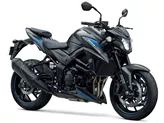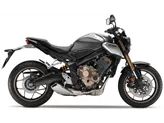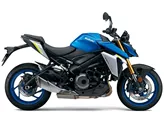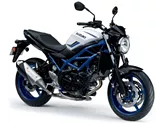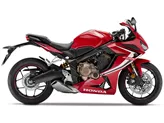Kawasaki Z 800 2013 vs. Suzuki GSX-S750 2017

Kawasaki Z 800 2013

Suzuki GSX-S750 2017
Overview - Kawasaki Z 800 2013 vs Suzuki GSX-S750 2017
The Kawasaki Z 800 2013 and the Suzuki GSX-S750 2017 are both naked bikes with similar engine types, inline 4-cylinder engines, and liquid cooling systems. However, there are some notable differences between the two models.
In terms of engine power, the Kawasaki Z 800 2013 has a slightly lower output with 113 HP compared to the Suzuki GSX-S750 2017 which has 114 HP. The torque figures are also slightly different, with the Z 800 producing 83 Nm and the GSX-S750 producing 81 Nm. While the difference in power and torque may not be significant, it could still affect the overall performance and acceleration of the bikes.
Both bikes feature upside-down telescopic forks in the front suspension, providing good stability and control. However, the Suzuki GSX-S750 2017 offers preload adjustment in the rear suspension, allowing riders to fine-tune the suspension to their preferences. On the other hand, the Kawasaki Z 800 2013 only offers rebound adjustment in the rear suspension.

Kawasaki Z 800 2013
In terms of chassis, the Kawasaki Z 800 2013 features a steel frame, while the Suzuki GSX-S750 2017 has an aluminum frame. The choice of materials can affect the overall weight and handling characteristics of the bikes. Additionally, the GSX-S750 has a twin tube frame design, which may provide better rigidity and stability compared to the double cradle frame of the Z 800.
Both bikes come equipped with double disc brakes in the front, providing strong and reliable stopping power. However, there are differences in the brake piston configuration. The Kawasaki Z 800 2013 has four pistons in the front brakes, while the Suzuki GSX-S750 2017 has double pistons. The number of pistons can affect the braking performance and feel.
In terms of dimensions and weights, both bikes have the same front and rear tire widths and diameters. The Suzuki GSX-S750 2017 has a slightly longer wheelbase of 1455 mm compared to the 1445 mm of the Kawasaki Z 800 2013. The seat height of the GSX-S750 is also slightly lower at 820 mm compared to the 834 mm of the Z 800. Additionally, the GSX-S750 is lighter with a kerb weight of 213 kg, while the Z 800 weighs 229 kg.

Suzuki GSX-S750 2017
In terms of strengths, the Kawasaki Z 800 2013 has an eye-catching, chunky look and offers confident acceleration. Its relaxed geometry and powerful brakes contribute to a comfortable and controlled riding experience. On the other hand, the Suzuki GSX-S750 2017 boasts a GSX-R 750 engine with a strong character, providing exhilarating performance. It also has powerful and well-controlled brakes, a harmonious design, and an affordable price. The sharp sound and great lean angle clearance further enhance the riding experience.
However, both bikes have their weaknesses. The Kawasaki Z 800 2013 has limited freedom of movement for the legs, which may affect rider comfort on longer rides. The Suzuki GSX-S750 2017 has an acute knee angle, which could also impact rider comfort. Additionally, some riders may find the tachometer difficult to read on the GSX-S750.
In conclusion, while both the Kawasaki Z 800 2013 and the Suzuki GSX-S750 2017 are powerful and capable naked bikes, they have some differences in terms of engine power, suspension adjustment, chassis, brake configuration, dimensions, and weights. Riders should consider their preferences and priorities to choose the bike that best suits their needs.
Technical Specifications Kawasaki Z 800 2013 compared to Suzuki GSX-S750 2017
Pros and Cons in comparison
Pros and Cons in comparison
Kawasaki Z 800 2013

Overall, the Z800 delivered a sensational performance. Considering the fact that nothing was changed or optimised on the vehicle apart from the Remus rear silencer, a super final result.
Suzuki GSX-S750 2017

More power, more performance, more sound. Suzuki also proves all the pessimists regarding the EURO4 standard wrong and delivers the GSX-S 750, a successor to the GSR 750 that has been further developed in every respect and can be a bit more serious, but doesn't have to be. To ensure that aha moments don't become oje moments, ABS and a three-stage traction control that can be switched off provide a safety cushion. With S21 tyres from Bridgestone, the GSX-S is super-sporty, allowing you to take advantage of the generous lean angle clearance. Only the acute knee angle could be a disadvantage on longer tours.
Price Comparison Avarage Market Price Kawasaki Z 800 vs Suzuki GSX-S750
There are a few key differences between a Kawasaki Z 800 2013 and a Suzuki GSX-S750 2017. In terms of price, the actual average price of a Suzuki GSX-S750 2017 is about 11% higher. Compared to Suzuki GSX-S750 2017 there are less Kawasaki Z 800 2013 bikes available on the 1000PS.de Marketplace, specifically 7 compared to 14. It takes less time to sell a Kawasaki Z 800 with 56 days compared to 84 days for a Suzuki GSX-S750. Since model year 2013 1000PS.de editors have written 11 reviews for the Kawasaki Z 800 and 14 reviews for the Suzuki GSX-S750 since model year 2017. The first review for the Kawasaki Z 800 was published on 9/6/2012 and now has more than 8,100 views. This compares to more than 50,800 views for the first review on Suzuki GSX-S750 published on 10/4/2016.



